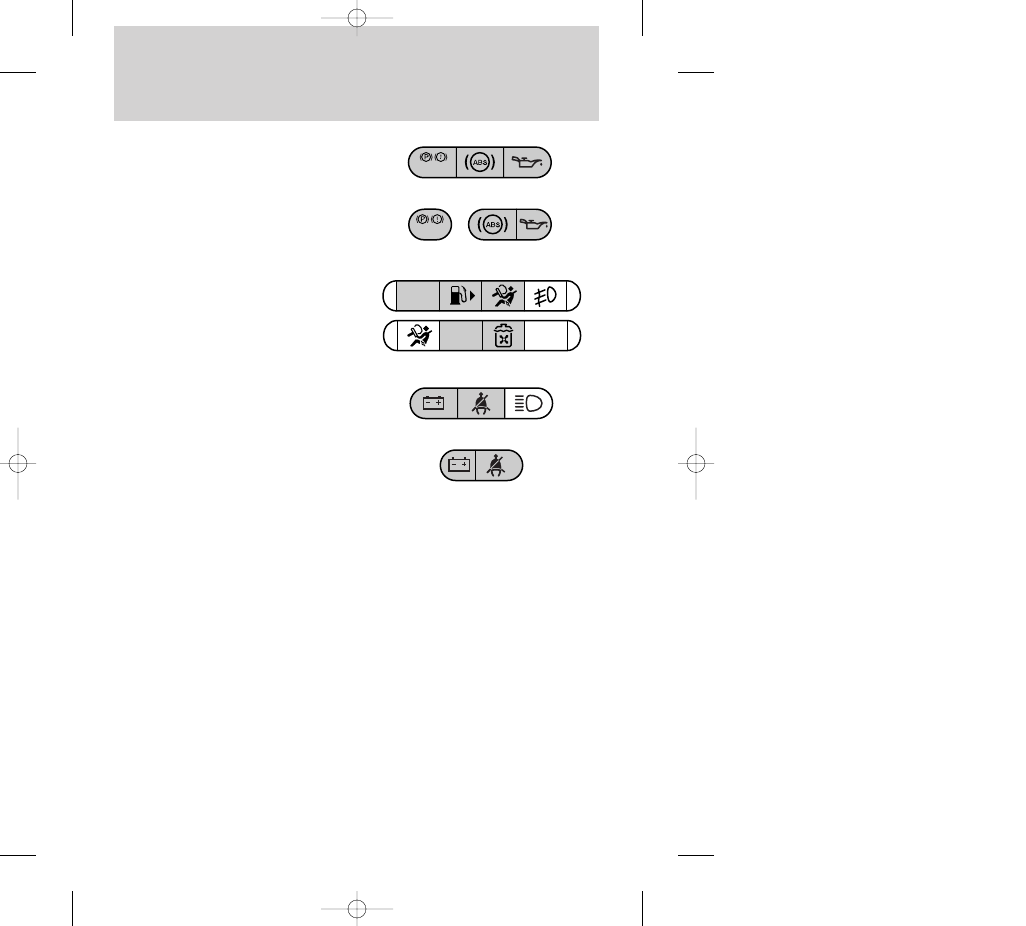Mercury Mystique (2000 year). Manual - part 8

Starting
113
3. Turn the key to the on position
(without turning the key to start).
Make sure the following lights
illuminate briefly. If a light fails to
illuminate, have the vehicle
serviced by your dealer or a
qualified service technician.
• If the driver’s safety belt is
fastened the safety belt warning
light does not illuminate.
BRAKE
BRAKE
CHECK
ENGINE
Alternative design
Alternative design
O/D
OFF
TRACTION
CONTROL
21MSten 24.6.99 15:23 Uhr Seite 113